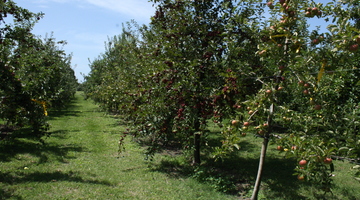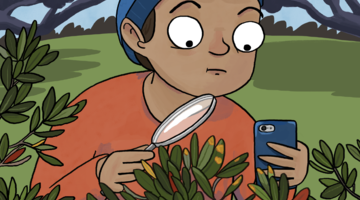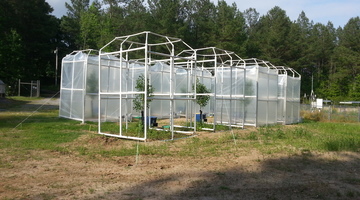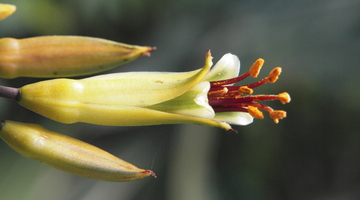

Phytochemicals are naturally occurring, biologically active chemical compounds in plants. The prefix ‘phyto’ is from a Greek word meaning plant. The presence of certain types of phytochemicals in ...
READ MORE

In this activity, students use industry methods to test and analyse some attributes of a variety of different apples. They use the findings to create an apple attributes chart to highlight key ...
READ MORE

In this activity, students conduct focus group research to generate consumer feedback on a proposed future apple variety. The activity forms part of the unit plan Developing future apple ...
READ MORE

In this activity, students test and compare the firmness of different apple varieties using an instrumental method adapted for the classroom. The activity forms part of the unit plan Developing ...
READ MORE

Myrtle rust is a serious biosecurity threat, and help is needed to monitor its spread. This citizen science project aims to gather information on the location, hosts and intensity of this fungal ...
READ MORE

By comparing some features of fossilised plants with the same features of plants living today, scientists hope to be able to learn more about the effect of changing carbon dioxide (CO2) levels in ...
READ MORE

iNaturalist logs hundreds of thousands of photos of flora, fauna and fungi. There are even sound recordings too. Each is described and geo located. iNaturalist is used by citizens and scientists ...
READ MORE

In this unit, students investigate trends and drivers and what may be possible and preferable attributes for new fruit varieties in the future. Purpose To understand the influences currently ...
READ MORE

A Year 9 class visited a local lavender farm as part of a biotechnology unit investigating the production, packaging and marketing of lavender oil for aromatherapy. The purpose of the field trip ...
READ MORE

Flowering plants create seeds, which get spread away from the parents and grow into new plants in new places. Pollination has to happen before seeds can be made, so flowers have a range of ways ...
READ MORE
Food technologists are developing new taewa products that will increase the value and demand for taewa crops. Identifying opportunities requires innovators who constantly think of new ideas and ...
READ MORE
Dr Mark Goodwin of Plant & Food Research explains how flowering plants use self-pollination or cross-pollination in their reproduction. He uses kiwifruit and avocado as examples to show how ...
READ MORE
Dave Kelly of the University of Canterbury explains abiotic pollination by wind and biotic pollination by animals. He shows the characteristics of bird-pollinated flowers and the birds that carry ...
READ MORE

This timeline follows the discovery of the bacterial disease Psa (Pseudomonas syringae pv. Actinidiae) in New Zealand, the combined efforts to first contain and manage the disease and the ...
READ MORE

About 45 different attributes are assessed at various stages of developing a new apple cultivar at Plant & Food Research. Click on the labels in this interactive to learn about some of these ...
READ MORE

This interactive illustrates a technique used by scientists to generate transgenic plants.
READ MORE